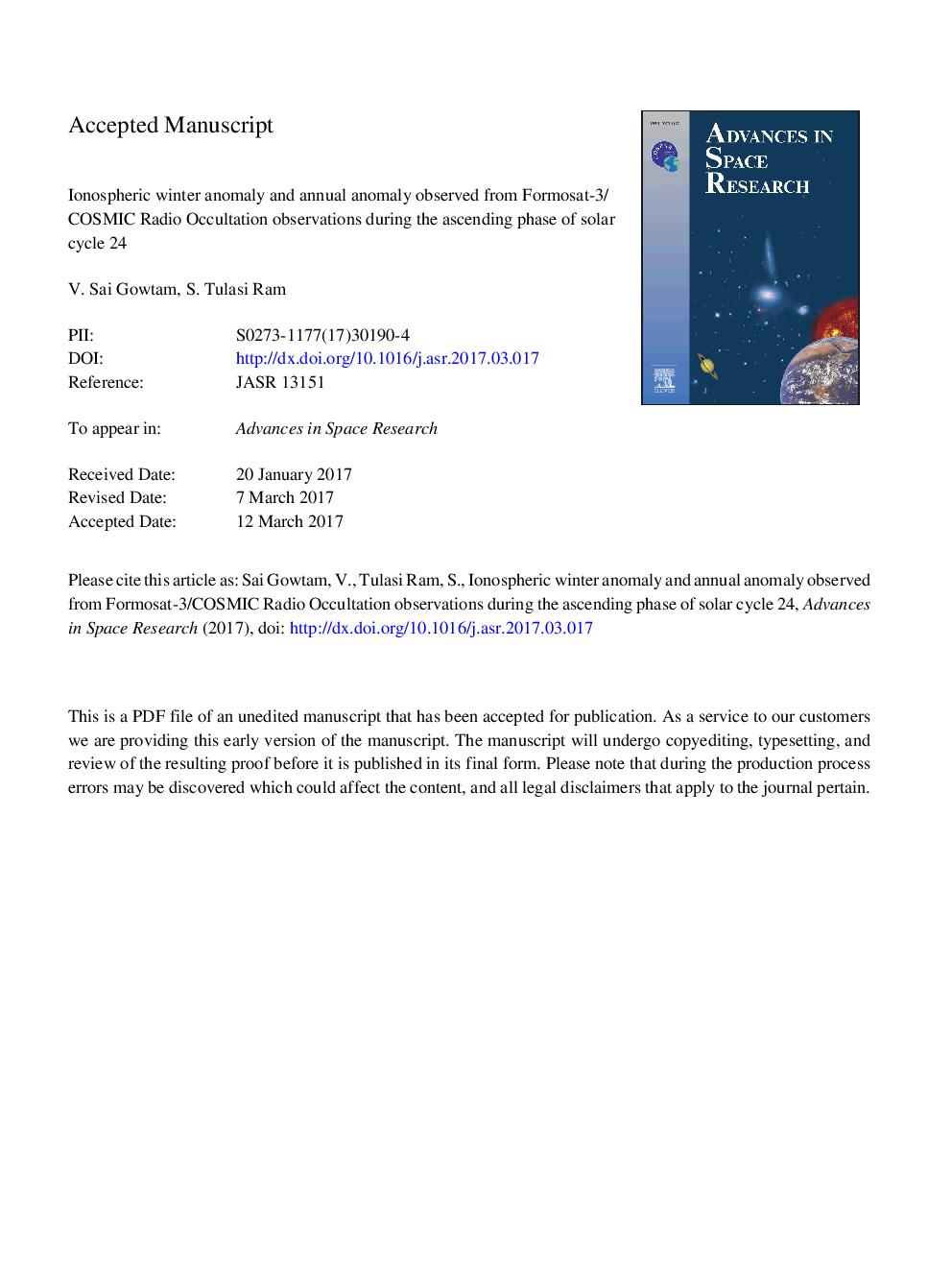| Article ID | Journal | Published Year | Pages | File Type |
|---|---|---|---|---|
| 5486384 | Advances in Space Research | 2017 | 26 Pages |
Abstract
Ionospheric winter and annual anomalies have been investigated during the ascending phase of solar cycle 24 using high-resolution global 3D - data of the FORMOSAT - 3/COSMIC (Formosa satellite - 3/Constellation Observing System for Meterology, Ionosphere and Climate) radio occultation observations. Our detailed analysis shows that the occurrence of winter anomaly at low-latitudes is confined only to the early morning to afternoon hours, whereas, the winter anomaly at mid-latitudes is almost absent at all local times during the ascending phase of solar cycle 24. Further, in the topside ionosphere (altitudes of 400Â km and above), the winter anomaly is completely absent at all local times. In contrast, the ionospheric annual anomaly is consistently observed at all local times and altitudes during this ascending phase of solar cycle 24. The annual anomaly exhibits strong enhancements over southern EIA crest latitudes during day time and around Weddle Sea Anomaly (WSA) region during night times. The global mean annual asymmetry index is also computed to understand the altitudinal variation. The global mean AI maximizes around 300-500Â km altitudes during the low solar active periods (2008-10), whereas it extends up to 600Â km during moderate to high (2011) solar activity period. These findings from our study provide new insights to the current understanding of the annual anomaly.
Keywords
Related Topics
Physical Sciences and Engineering
Earth and Planetary Sciences
Space and Planetary Science
Authors
V. Sai Gowtam, S. Tulasi Ram,
